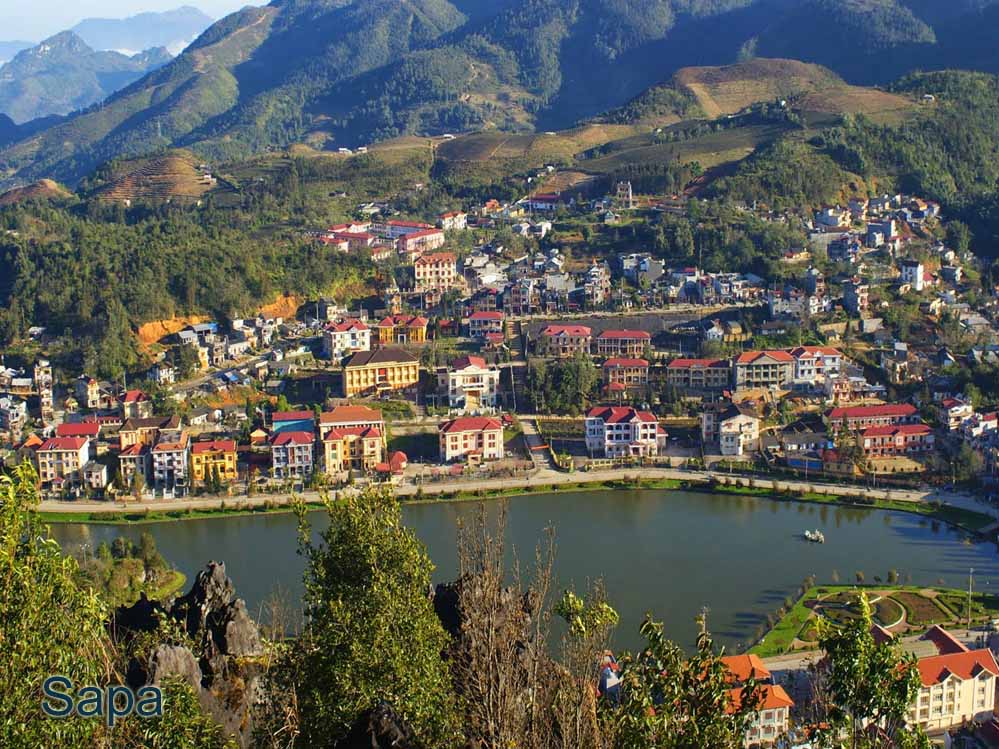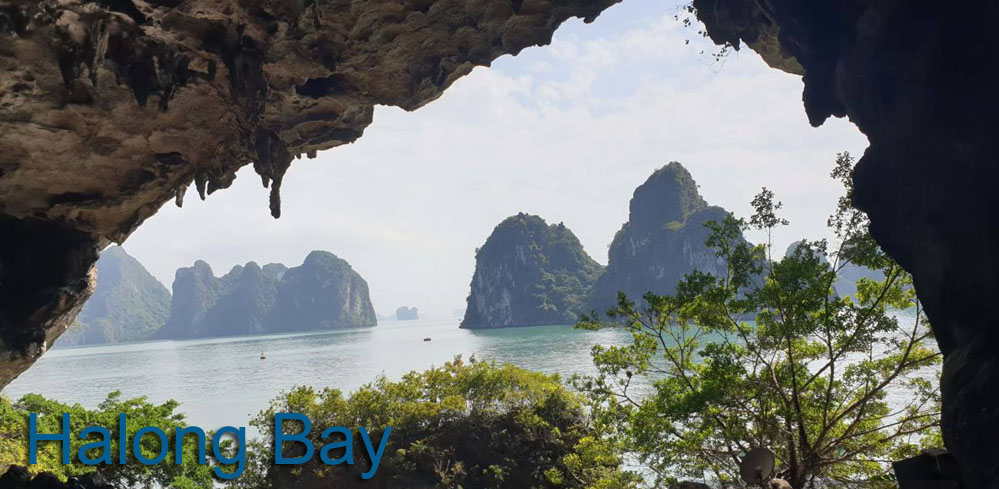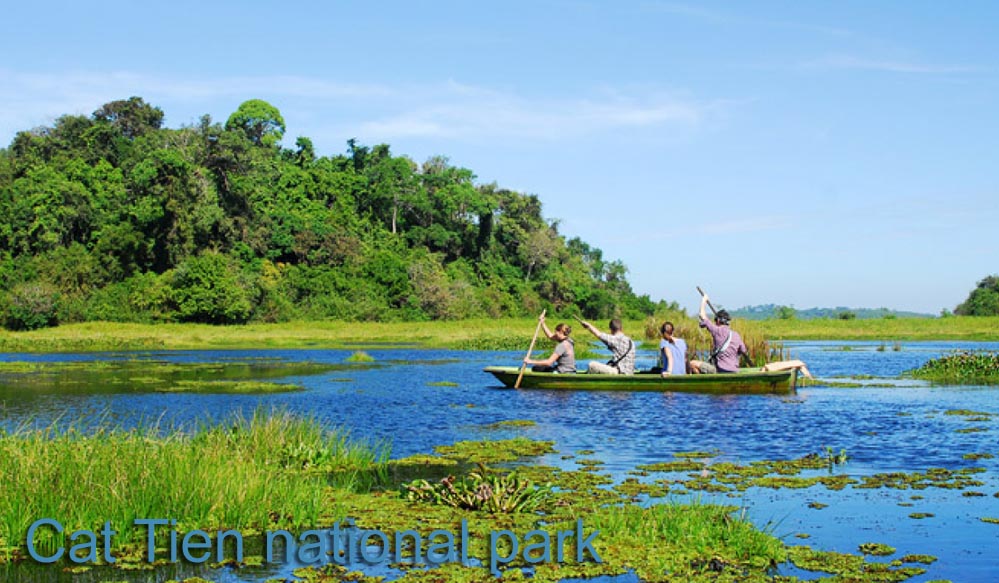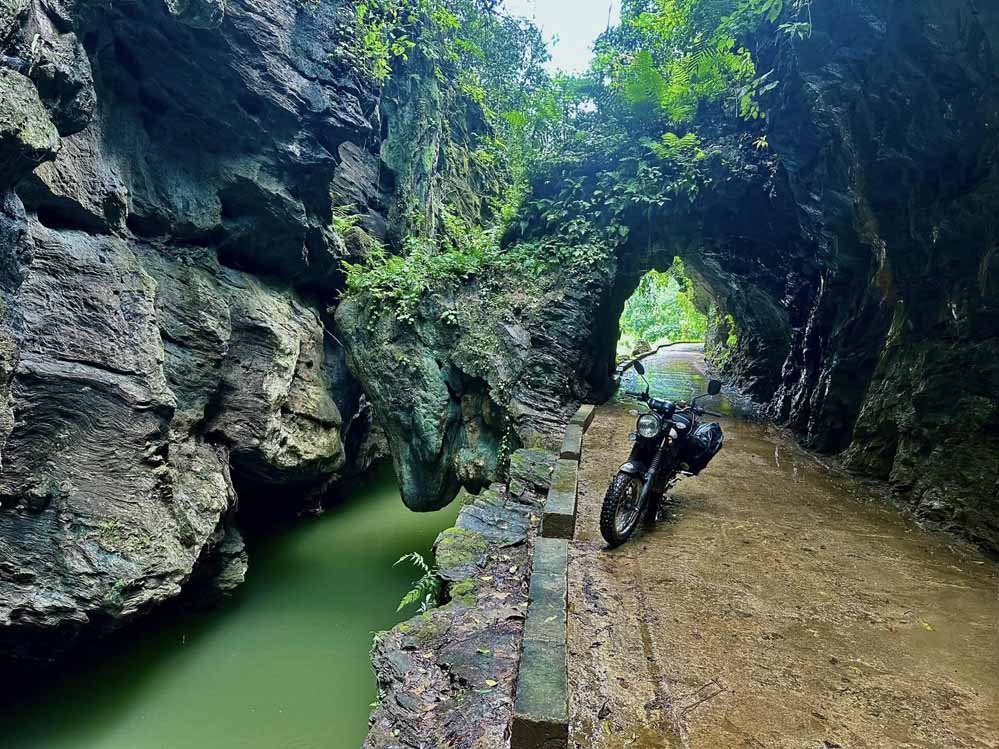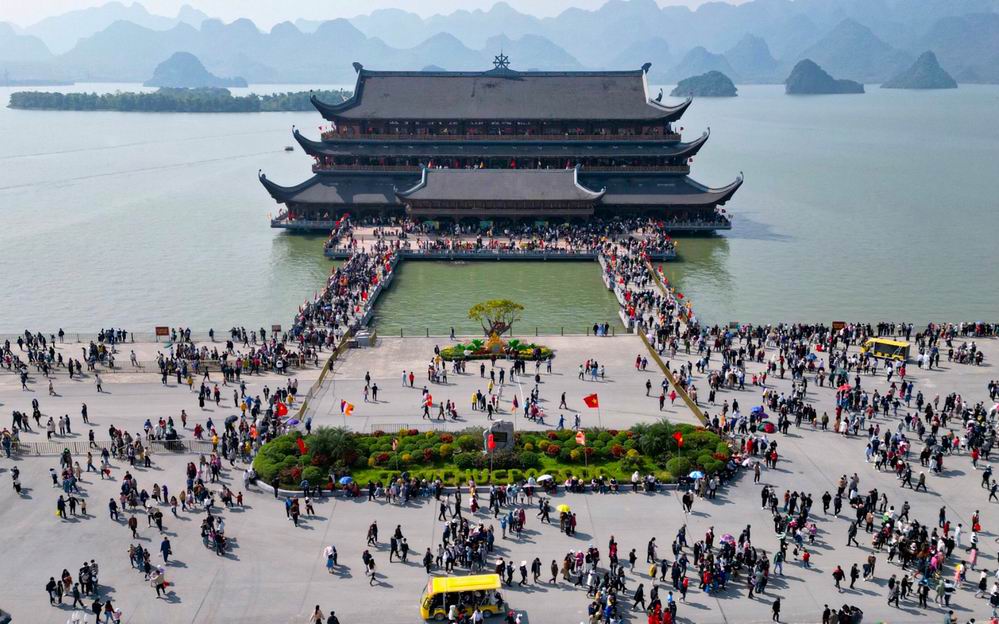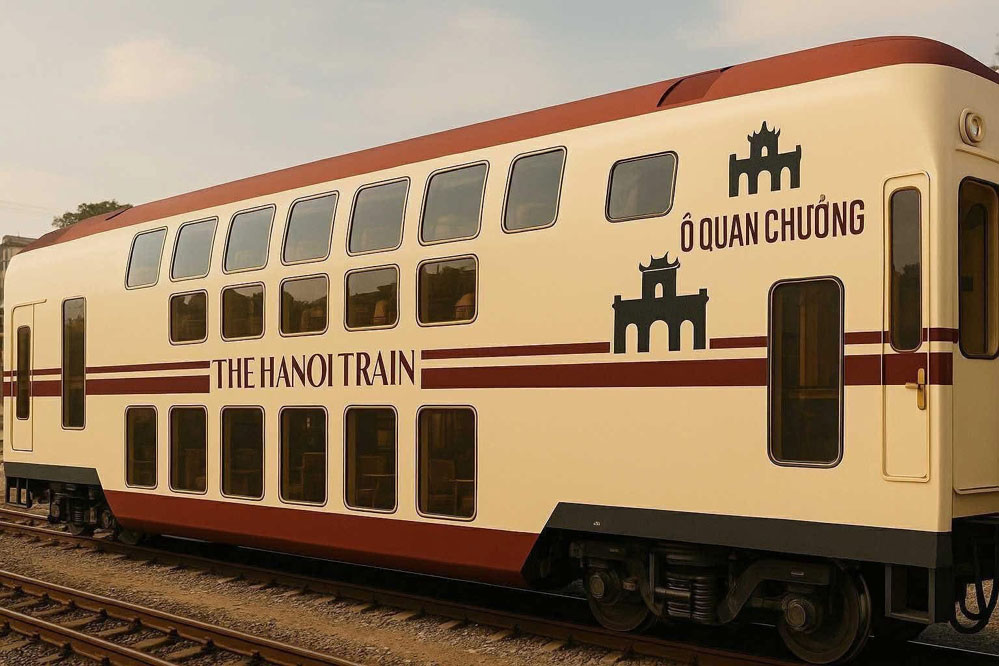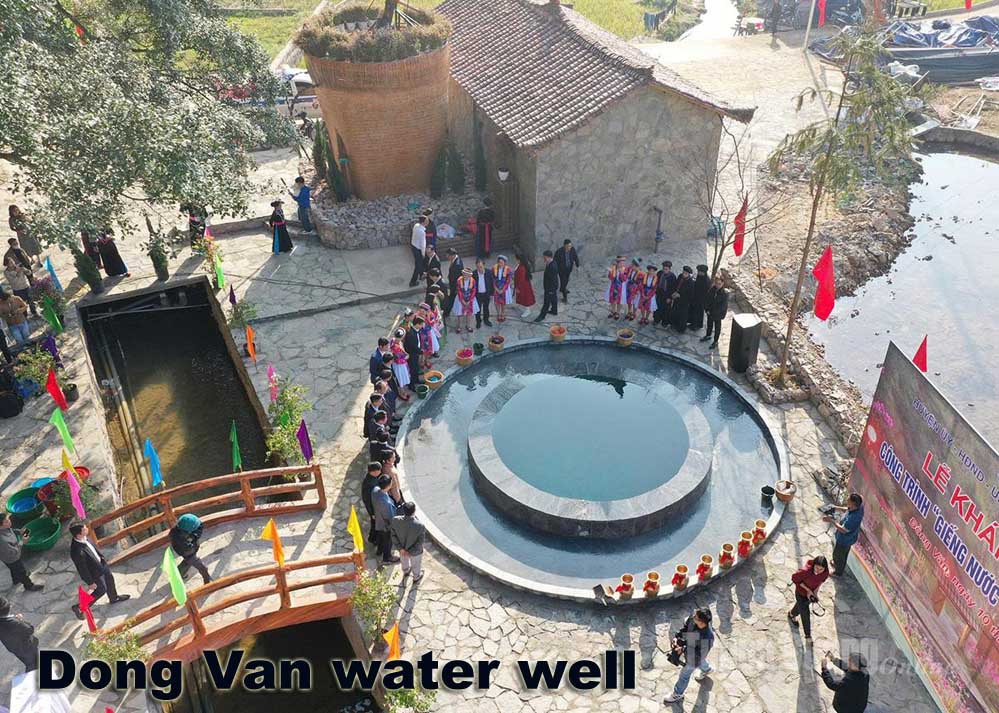Indochina Junk - There are times of bad weather, however autumn in Halong Bay gives visitors a more nostalgic feeling because the clouds seem to be pushed up higher, the sky is clearer, the emerald sea water is also gentler. And this is also the beginning of the peak season for foreign visitors, especially European and American visitors, who come to avoid the cold winter of the cold climate and enjoy the warm air of the tropical sea during their trips...
The story in Vung Vieng
Following the canoe to the offshore sea on the VHL3, VHL4 journey of Halong Bay, in just a moment we had left the coastal landscape far behind, and there were no longer countless luxurious cruise ships "pleasing to the eye" in sight, but only the vast waves and majestic large and small rocky mountains of the sea. This desertedness, according to some tourism businesses, is on the contrary a plus point for many foreign tourists, especially high-class tourists.
We stopped by Vung Vieng Fishing Village - one of the poetic destinations on route number 4 in Halong Bay. The fishing village is nestled next to majestic rocky mountains in the middle of the sea, with a unique "village gate" made of natural stone. Through research, it is known that there are currently 4 businesses investing in a number of services to serve tourists, such as: Boat rowing and kayaking services to visit the fishing village; Halong sea wine; visiting the pearl processing and farming area and shopping for products, Halong Bay photo exhibition area.
Each point has its own unique features, such as the art gallery that provides visitors with new perspectives on the heritage; the display of fishermen's daily necessities shows the unique cultural features of fishermen who have lived on Halong Bay for many generations. In particular, the two sales areas and pearl farming experience areas here can make visitors marvel at thousands of precious and delicate jewelry products made from pearls cultured directly on Halong Bay.
Listening to the staff's stories, we understood that this area was not too crowded with groups of tourists and they were mostly foreign tourists staying overnight on cruise ships. Luckily, after waiting for a while, we met several groups of tourists coming one after another. It was easy to see that, unlike the area near the shore, the boats here did not have many passengers, some boats carried 2 passengers, many boats only had about 20 passengers. Guests could choose different experiences. Vung Vieng fishing village has a relatively large area, most guests choose to sit on a bamboo boat or kayak to enjoy the beauty of the heritage landscape, feel the freedom of the sea and the wild, peaceful nature. These are simple experiences that are very attractive to tourists.
Research shows that the Vung Vieng fishing village area mainly attracts foreign tourists, such as Chinese, Korean, Indian, and European tourists. However, after the Covid-19 pandemic, the number of visitors here has decreased significantly, especially Asian tourists. The number of visitors used to be around 17,000 to 22,000 per month, now only fluctuates from around 4,000 to 8,000 to 9,000 per month, only 1/3 compared to before.
Nguyen Ngoc Hieu, manager of Vung Vieng Fishing Village Tourism Joint Stock Company, said: After the epidemic, the economy has declined, affecting the travel needs of tourists. Second, the products on the route are still limited. Tourists are currently not allowed to swim in the sea in this area even though there are many beautiful sandy beaches. Foreign tourists once shared with me that they traveled a long way to get here but still have not been able to swim in the sea in Halong Bay. The main services here are rowing boats, kayaking, visitors here expressed their desire to play water sports, snorkeling to see corals, surfing, parasailing, high-speed canoeing... but they are not available here yet. The caves in this area are small but pristine and quite beautiful, but currently only Co Cave is open to visitors, I think it will also attract tourists if we exploit the caves here better.
The VHL3 itinerary includes attractions such as: Cua Van Floating Cultural Center, Bamboo Forest area, Tien Ong cave, Ang Du, Ba Ham lake, Ba Men temple. The VHL4 itinerary includes: Hang Co - Hang Thay - Hang Cap La - Vung Vieng - Tung Ang eco-tourism area - Cong Do island - Hon Xep park. The landscapes of the areas on these two sightseeing routes are wild, quiet, with diverse ecosystems and very special destinations in terms of cultural and historical values. However, the services are similar to the Vung Vieng fishing village area, not much. Many places on the route are not currently exploited, such as: Cua Van Floating Cultural Center has been degraded and devastated by storms, not yet restored; the Bamboo forest area, Hang Thay, Hang Cap La have not been exploited or the infrastructure is not guaranteed for tourists to visit.
Indochina Junk Cruise company has been specializing in exploiting the VHL4 route for the past 15 years. The company currently welcomes about 24 thousand guests annually, mainly European guests. When we arrived at the Co cave area on route 4, six of the company's cruise ships were taking guests to visit and experience the area.
Director of Indochina Junk Cruise analyzed: The European tourist groups that we are exploiting recently has even grown. We only focus on small and medium-sized tourists. But recently, most businesses have focused on building very large cruise ships, similar in design to those of European countries, with a room capacity of 20 rooms or more. Therefore, the European tourists, high-paying customers, and customers who need privacy when coming to Halong Bay will currently lack many product segments.
In addition, he also proposed to develop more diverse products on the route. He said: In all meetings, we expressed our views on how to open up and create new products on route 4 of Halong Bay. We also proposed services on the route such as exploiting small and medium-sized beaches so that tourists in high-end segments but traveling in groups of less than 40 people can visit, experience and bathe on the beaches, or organize small parties on the sandy beaches of Hon Co, for example. However, these proposals have not yet been resolved, we are still struggling with the issue of how to manage them.
The needs of tourists and businesses are very legitimate. Satisfactory resolution of these issues is also an opportunity to open up and continue to exploit the potential of Halong Bay. Concerned about this issue, policy solutions are the first priority.
The Halong Bay Management Board said that in the coming time, the unit will focus on accelerating the completion of the legal corridor to serve as a basis for implementing tourism infrastructure investment projects and developing tourism products aimed at the high-paying customer market on VHL3 and VHL4 itineraries. The products will be selectively developed, such as: Organizing art performances in caves and sandbanks combined with organizing light parties; organizing mountain climbing tours, exploring new caves in Halong Bay; organizing squid fishing and recreational fishing services; developing fashion shows; adding underwater entertainment products combined with fishing village culinary experiences...
In addition, to attract more visitors during the day, the unit plans to submit to the Provincial People's Committee for consideration the exploitation of high-speed boats to take visitors to offshore routes. Regarding infrastructure, speed up the completion of construction, repair and renovation of degraded infrastructure at the points currently welcoming visitors on the two itineraries VHL3 and VHL4. At the same time, review and deploy new investment in infrastructure at points that are included in the ticket structure of the two itineraries above but have not been invested in the past time, to ensure adequate conditions to welcome visitors, such as: Ba Ham Lake, Ba Men Temple, Du Cave, Truc Forest, Thay Cave, Cap La Cave, Pine Area - Cong Do Cave...
Source: https://indochinajunkcruises.com/travel-news/vung-vieng-fishing-village-in-bai-tu-long-bay.htm

